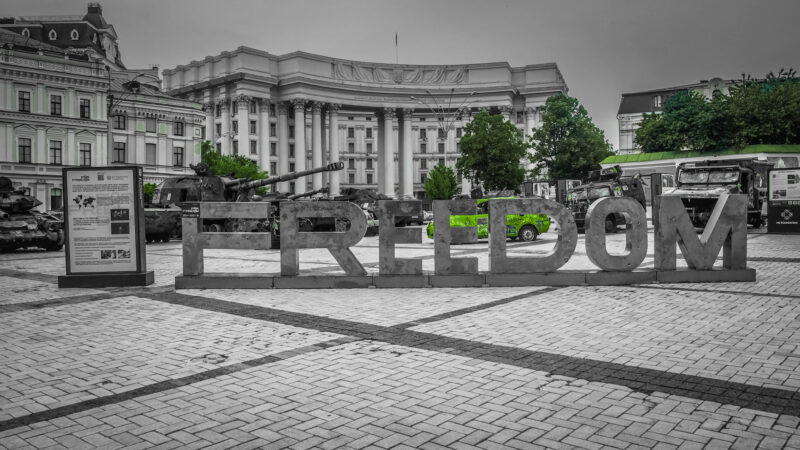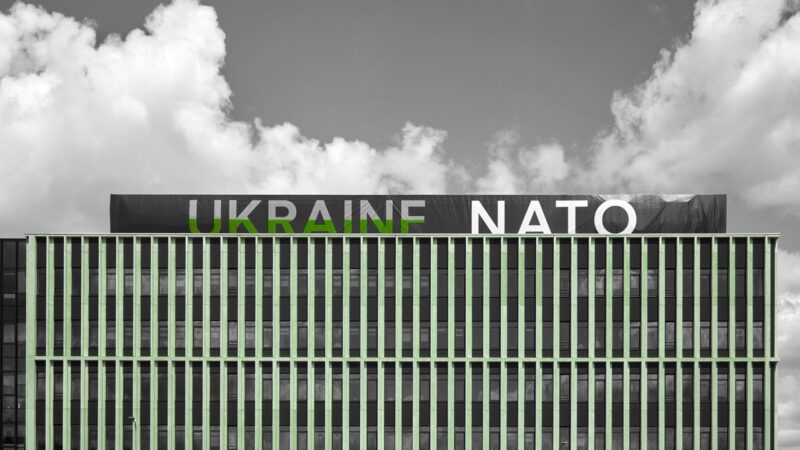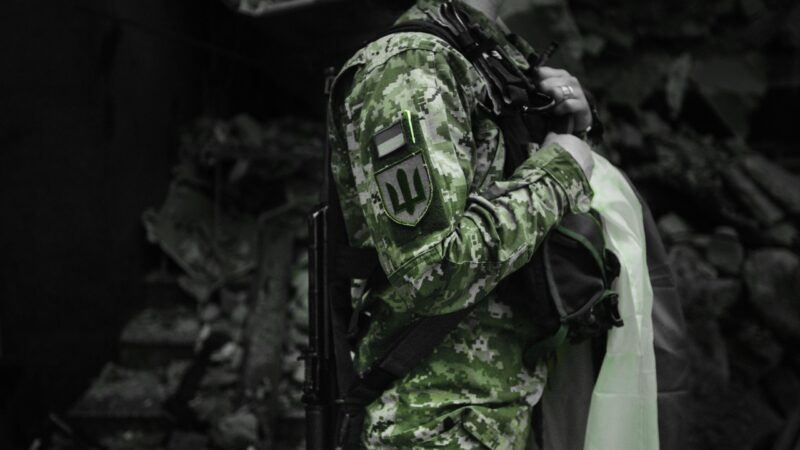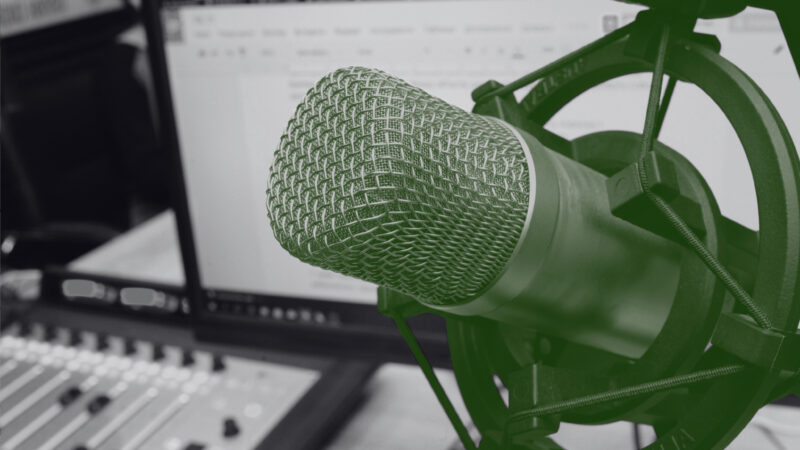Interview with Mykola Bielieskov | Ukrainians forced into fighting an asymmetrical war, getting good at it
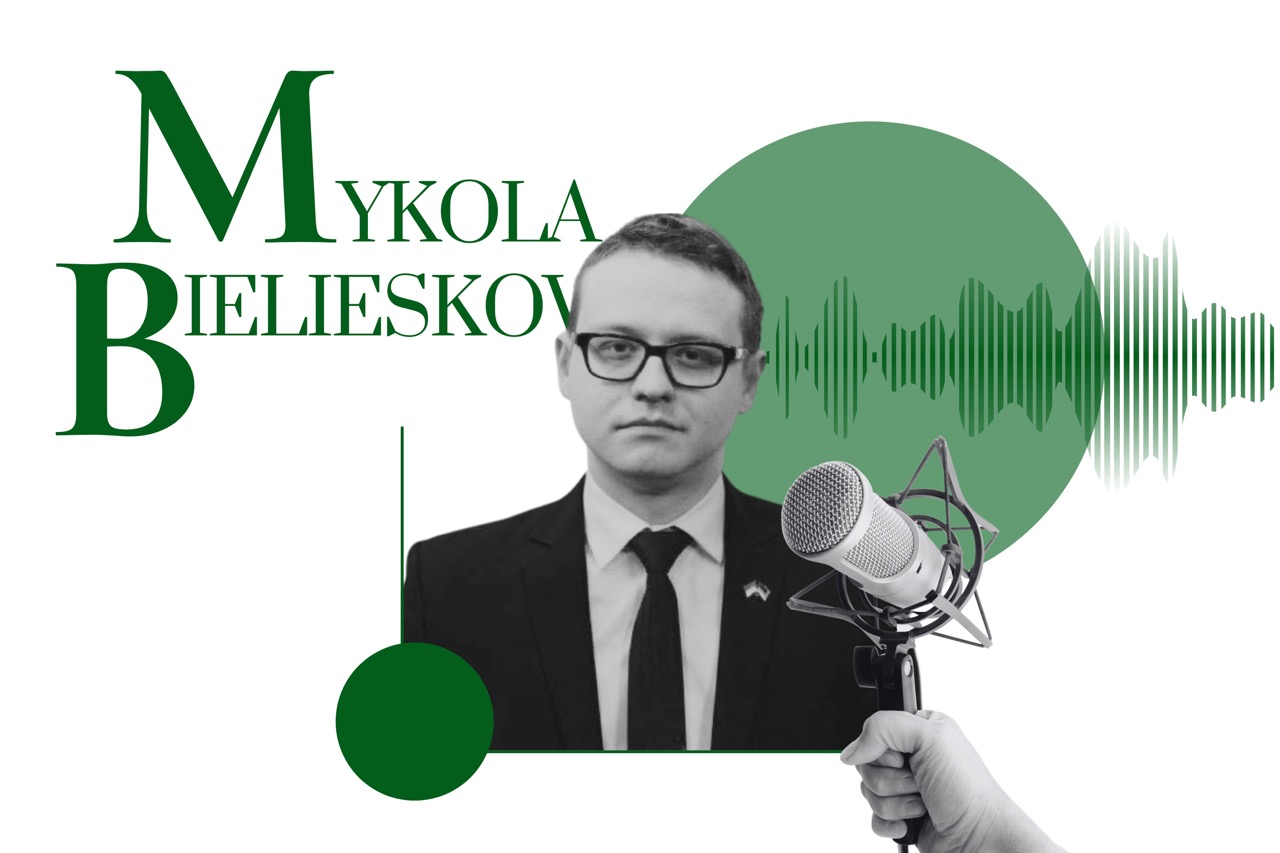
Ostap Kushnir: Since April 2022, when we last spoke, what have been the major changes in Ukraine’s warfare tactics? What achievements or failures have they brought?
Mykola Bielieskov: Since war is a process of continuous mutual adjustment, Ukraine’s defensive tactics have evolved in response to the evolution of Russia’s offensive tactics. From mid-April 2022, Russians began to rely disproportionately on heavy artillery bombardment. Thus, the main Ukrainian task became to withstand those continuous attacks and prevent Russians from using them to penetrate the defensive lines or carry out large envelopment of Ukrainian forces in the Donbas. Up to the end of the summer, Ukraine had to prioritize negating Russia’s disproportionate reliance on artillery and depleting Russian forces to the fullest possible extent.
Before the West started delivering tube artillery and then multiple-launch rocket systems, Ukrainians relied on their infantry, defensive depth, and numerical superiority, which were combined with an abundance of anti-armour [e.g., Javelin missiles—O.K.] supplied by the West. The logic was as follows: Ukrainians engineered effective defensive positions beforehand and used them to withstand all incoming barrages of artillery. While the Russians had problems moving with armour and infantry after heavy shelling, the Ukrainians appeared relatively unscathed and could inflict further damage. It was a continuous game of Russians moving back and forth from Ukrainian positions.
In the Donbas, the situation was threatening north of Izium in the summer. However, the Ukrainian positions did not crumble and all that the Russians could accomplish was frontal assaults and slowly pushing the Ukrainians out from Severodonetsk, Lysychansk, and Popasna districts. The frontal assaults came at a high cost. In turn, the Ukrainians won time, saved troops’ lives, and prevented the Russians from quickly penetrating their defensive lines, especially on the flanks. Winning time was crucial for Ukraine, as it waited for the US delivery of long-range precision weapons, above all M142 [HIMARS—O.K.] and guided multiple-launch rocket systems [MRLS or M270—O.K.].
Having received that delivery, the Ukrainians were able to apply another tactic—an asymmetrical one. In fact, the latter tactic was to a significant degree dictated by Western decisions. Instead of providing Ukraine with considerable numbers of tube artillery so that it could symmetrically match Russia’s firepower, the US and other partners opted for multiple-launch systems of longer range and more sophisticated performance. This allowed the Ukrainians to target Russian warehouses and command-and-control nodes in the rear instead of attacking troops on the front line. As we see today, this worked well.
Basically, Ukraine proved right the whole concept under which the M142 and M270 were created: if it is possible to target priority enemy sites in the rear and destroy them, then ultimately the enemy will slow down its advance. We see today that the Russians dispersed too much of their offensive potential. They gained almost no ground when they pushed toward Bakhmut after the capture of Severodonetsk and Lysychansk. Bakhmut remains under Ukrainian control despite three months of active fighting on its outskirts. In the other theatres, Russians also ceased any advances. They predominantly switched to defence in the Kharkiv region, Zaporizhia, and Kherson. In a word, Ukraine proved that you do not always need to match the enemy symmetrically in firepower to be effective.
Some time in mid-summer, Russia started to lose initiative. The nature of the war became different compared with its first stage, which was discussed in the previous interview. From mid-spring until the end of June, it was the enemy who possessed the initiative and Ukraine had to adjust: for instance, if Russia concentrated its forces in the eastern theatres, then Ukraine had to do the same. However, at the beginning of August, when Kyiv publicly promised the counter-offensive in the south, the first signs of Russia’s major realignments became apparent. That provided the best evidence that the enemy was losing initiative, and subsequent operations only proved it true.
A very good example of Ukraine using its initiative was the liberation of the Kharkiv region. It was mainly about misleading the enemy: Ukrainians “convinced” the Russian command that they would go on a major offensive in the south, in the Kherson region, yet they performed a classic offensive operation in the northeast. The latter was something that the Russians had not managed to do for months and were forced to rely on slow frontal assaults. Instead the Ukrainians—even while lacking air superiority, means of mobility, armour of different kinds, or artillery—managed to quickly penetrate the enemy’s depths of defence and made it flee. Russians were running away so fast that they had no time to destroy warehouses with equipment and ammunition, leaving them to Ukraine. This is how successful the operation in the Kharkiv region was.
In sum, first, in spring Ukraine needed to, and eventually managed to, adjust to the new Russian tactics, which were heavily dependent on artillery, despite the fact that Ukraine lacked effective countering means. Afterwards, in mid-summer, when Ukraine received means of asymmetrical response from the West, it employed them on the battlefield effectively and, little by little, made the Russians switch to defence. Finally, in late summer Ukraine gained the initiative, epitomized in the successful Balakliia-Kupiansk military operation. It took Ukraine only one week to liberate a major swath of its territory.
Kushnir: What do you think about the ambition to liberate the whole of Ukraine in a powerful counter-offensive, as declared by President Zelensky in September? How realistic is it to “come back to where it all started” and de-occupy Crimea? How is the counter-offensive in the south going?
Bielieskov: Firstly, everything President Zelensky said was not on his own whim but a direct reflection of the Ukrainian public mood. This is the crucial thing that the Western audience needs to understand. If one looks at surveys conducted by different sociological agencies, it becomes clear that Ukrainians are not ready for compromises, given their great sacrifices and the destruction they are suffering.
Considering such a public mood, it is natural and logical that since it all started in Crimea, everything needs to end in Crimea. Moreover, Ukrainians learned their lesson from 2014 and 2016, when the negotiated ceasefires and truces did not hold for long, as they could not solve the major source of the problem—which was Russian imperialism. Today, as a legitimate democratic leader Zelensky has no other option but to reflect the general mood of Ukrainian society.
Definitely, Ukraine could liberate Crimea in a sequence of operations; the experience of the Second World War proves that it is possible. However, Ukraine cannot do everything fast, especially given the lack of heavy weaponry. In his address, Zelensky communicated a broad strategic objective: some time in the future, Ukraine will attrit the Russian forces both in offence and defence and will reclaim Crimea in a natural way. Zelensky never provided a strict timeline of de-occupation, he is quite wise and prudent not to do so. He just spoke about what will happen because society wants this to happen.
As for the offensive in the south, it could have developed more swiftly. However, its slow pace is an indirect result of Ukraine’s success in the Kharkiv region. Being misled by Ukraine’s promises to attack Kherson, Russia concentrated a great amount of forces there, disproportionately to the territory. Today, it is taking more time to break through those forces.
Ukraine announced the start of its counter-offensive in the south at the end of August, but the first major successes came only towards the end of September. Ukraine’s gains in the northern part of a Russian salient on the right bank of the Dnipro in Kherson region were the result of a very slow attrition fight. The Ukrainians performed continuous harassing actions on the front by intercepting Russian resupply and damaging reserves. In my opinion, the forthcoming battle in the south will continue being slow, especially after Putin has made it clear that Russia has to retain Kherson at any cost.
As with Crimea, the south of Ukraine will not be liberated in one decisive strike but in a sequence of operations, given the deficit of heavy weaponry and the specificity of the terrain. Ukraine will keep on using long-range attacks to target warehouses, command headquarters, and control hubs, and to disrupt logistics. This tactic of harassing actions should be especially effective in winter, when the logistics will revolve around not only fuel and ammunition but also warm clothes and food. It may happen that by early spring Russia’s army will cross the point of no return. The Russian soldiers may become so demoralized that they will just refuse to fight and the front line will disintegrate on its own—as it happened to their army during the First World War.
Kushnir: In September President Putin announced a partial mobilization in Russia, to which President Zelensky responded with Ukraine’s application to NATO. Then there was an explosion on the Kerch Strait Bridge in Crimea, followed by mass bombardments of Ukrainian cities and infrastructure. What changes in the nature and dynamics of war do you anticipate following the logic of these events?
Bielieskov: I am not convinced that Russians will be able to sustain the same intensity of strikes that they demonstrated on 10–11 October, especially using cruise missiles. Definitely they will continue using kamikaze UAVs [unmanned aerial vehicles, or drones] procured in Iran, but relying on them only has its limits. These drones cannot be used against moving targets, like HIMARS, as they do not feed video to their operators. As for attacks on infrastructure such as electricity generators and distribution facilities, these vehicles will be effectively shot down by Ukraine’s air defence systems. Even today, the rate of interception of Russia’s drones is comparatively high, 40 to 60 per cent, depending on the situation.
To create a proper level of damage, Russia would need to resort to piloted aviation, which is easier said than done. Ukraine’s sky remains contested, and Russians are not likely to gain air superiority, especially when the West made a commitment in early October to strengthen Ukraine’s mid-range air defences. Therefore, without piloted aviation Russia will not be able to demolish cities on a wide scale, inflict damage on critical infrastructure, destroy M142 and M270, or significantly reduce the effectiveness of Ukraine’s manoeuvring.
Speaking of the other developments, they will largely depend on the Ukrainians’ boldness. To date (mid-October), notwithstanding Putin’s nuclear threats, Ukrainians are continuing to wage the war as they deem appropriate. A month ago they masterfully liberated the Kharkiv region. When Putin declared that some parts of Ukraine were being incorporated into Russia and any assaults on them would lead to escalation, Ukrainians brushed these threats aside, regaining Lyman and approaching Svatove.
One of the most important factors influencing the dynamics of the war is the consistency of Western support. Luckily, as of today, Ukraine’s partners are no longer buying into Putin’s nuclear blackmail. Ukraine was granted two new packages of immediate assistance from the US, which include multiple-launch rocket systems and other priority weapons. The Western message to Ukraine is clear: continue doing your job as you have been doing it before.
Also, it would be very difficult for Russia to employ nuclear weaponry. And here I do not mean technically difficult but psychologically. The majority of the world’s governments have placed the responsibility for the 24 February escalation on the Russian side. These governments will not accept its launches of tactical nuclear missiles as legitimate. In turn, Putin seems to be concerned about legitimacy in this context.
To sum up, I think that the nature and dynamics of the war will not change much in the foreseeable future. We will continue experiencing what we have already experienced in the previous month and a half. The Ukrainians will exploit their initiative and do everything they can to inflict damage and attrit the Russian forces. In turn, the Russians will do everything they can to hold their front lines and terrorize civilians. The winter will be a period of relatively moderate fighting, as additional strain on soldiers and equipment will be unavoidable. Therefore, I expect that the major accomplishment for Ukrainians in winter will be to endure it unscathed, regroup, recuperate, and retain as much morale as possible. I do not anticipate that Ukrainians will launch a major offensive operation in low temperatures, but such a development should not be considered totally impossible.
Kushnir: You mentioned in your previous interview that no red lines existed for Putin and that he could resort to nuclear weapons at any time. A few minutes ago, you mentioned that it is psychologically hard to do so. How do you assess the real probability for Russians to use nuclear weapons against Ukraine in the situation they face now? Is this probability higher or lower than in spring?
Bielieskov: Definitely things are not developing in Putin’s or Russia’s favour. The probability of Russia employing nuclear weapons increased because the stakes have increased. The war has become a matter of political survival for Putin and his regime.
However, the fact that nothing can be excluded today does not mean that nuclear escalation is inevitable. During one week in September, after Russia lost its battlefield initiative, Putin twice threatened to use nuclear weapons. It would be a grave mistake not to take such threats seriously. At the same time, Ukrainians continued their counter-offensive and no “ultimate response” followed.
I am 100 per cent sure that the governments in Washington and Kyiv have already designed a number of retaliatory measures, depending on what Russia will do. This is a natural thing: to be prepared for any development in times of war, especially for the worst-case scenario. However, we also need to look at the accompanying risks. If Russia employs tactical nukes against a military or civilian target in Ukraine, it is difficult to predict what it might gain.
Ukrainians are already in an existential fight, and I am not sure that the Russian nuclear threats would work, especially considering the damage it suffered from conventional weaponry. The whole idea behind possessing nuclear weaponry is to scare opponents off, make them retreat, and agree with the proponent, because the stakes are so high. However, in the case of Ukraine, the stakes have been the highest since February, while its choices have been very limited.
I am inclined to think that the nuclear strike option is actually very, very risky for Putin and his regime. If it happens, then all the states which adopted favourable or neutral positions toward Russia will revise them. The strike will also be the point of no return for the West. Up to now, the Biden Administration has regularly emphasized that the US policy endgame is not regime change in Russia but a change of Russian foreign policy. However, if the nuclear taboo gets violated, then I think regime change will become a primary goal of US policy. Global security should not be dependent on one person who is, I would say, out of touch with reality.
I think Putin understands these circumstances quite well. Thus, the likely key objectives behind his nuclear threat are: win time to finish additional preparations in Russia and wait for the mobilization to take effect. For their part, Ukrainians have already crossed the threshold of fear. The damage they have suffered in terms of human lives and demolished infrastructure is unprecedented. At this point, it would take a couple of tactical nukes to replicate a similar level of damage.
In conclusion, we should not underestimate the probability of the worst-case scenario. However, personally I am not inclined to take the nuclear rhetoric seriously.
Kushnir: In your opinion, what kind of equipment is of crucial importance for Ukraine today? What does Ukraine expect the West to provide it with as soon as possible?
Bielieskov: The list of crucial equipment has not changed much since the outbreak of the invasion. In July, [the Commander-in-Chief of the Armed Forces of Ukraine] Gen Valerii Zaluzhnyi spoke to [the Chairman of the US Joint Chiefs of Staff] Gen Mark Milley, saying that more tube and multiple rocket artillery was needed to fully negate the Russian advantage in firepower. I would say that this remains Ukraine’s number one priority up to now. But it is by no means the only one.
Ukraine needs air defence systems. This was made clear in the aftermath of the bombardments on 10–11 October. Yet again, such a need had been clearly communicated by President Zelensky already in February. At that time, Ukraine requested surface-to-air missiles of medium range and fighter jets to defend its skies.
Also, as the offensive in the Kharkiv region demonstrated, Ukraine needs specialized transport vehicles. To perform effective offensive operations, any army has to rely on speed, manoeuvrability, protection, and firepower. These all are secured by the main battle tanks, armoured personnel carriers, and infantry fighting vehicles.
Apart from this, Ukraine needs reconnaissance UAVs to arm with artillery and make it more precise, as well as communication equipment to coordinate the whole grouping of forces. Short-range ballistic missiles, the delivery of which remains the major point of disagreement between Kyiv and Washington, are also of pivotal importance.
In a nutshell, to succeed at combined arms warfare, Ukraine has to obtain a specific set of equipment: artillery, means of mobility, communication devices, reconnaissance devices, surface-to-air missiles, jet fighters, anti-ship missiles, ballistic missiles, and others. It is pointless to determine exclusive priorities or cherry-pick one weapon over the other, as all are mutually reinforcing.
Kushnir: What do you think are the lessons that the West has learned from this war?
Bielieskov: The crucial lesson for the West, and I would say the scary one, is the discovery that the rate of consumption of ammunition exceeds the rate of production. In the case of the US, despite them having one of the world’s biggest manufacturing capacities, the speed of supply of the missiles to HIMARS is falling short of Ukraine’s demand. Besides, no new Stingers have been made since 2005. Therefore, the Western states have learned that to wage contemporary wars effectively, they should store tens of thousands of high-precision ammunition items in their stockpiles.
Of course, we may discuss some specific tactical lessons from the Russo-Ukrainian conflict, yet I am not sure that it has really revolutionized warfare. I would say that the Ukrainians have proven true some concepts that had been invented earlier but never properly tested. Such, for instance, was the concept of using precision ammunition with a range of 70-80 kilometres to destroy priority targets in the enemy’s rear and slow down its advances. Or the concept of command delegation which made the Ukrainian army more decentralized and therefore more flexible, improvisational, and adaptive compared to the Russian one. However, the Russo-Ukrainian conflict as such has not changed the understanding of modern warfare. Military establishments are not about to reflect on its dynamics and write new books from scratch.
In the end, I can say that the Russo-Ukrainian war will definitely redesign international relations, but not in the aspect of national militaries preparing for combat. Let us be honest: the Russo-Ukrainian war is one of high intensity where two armies with many deficiencies and shortages clash in a rather old-school fashion.
